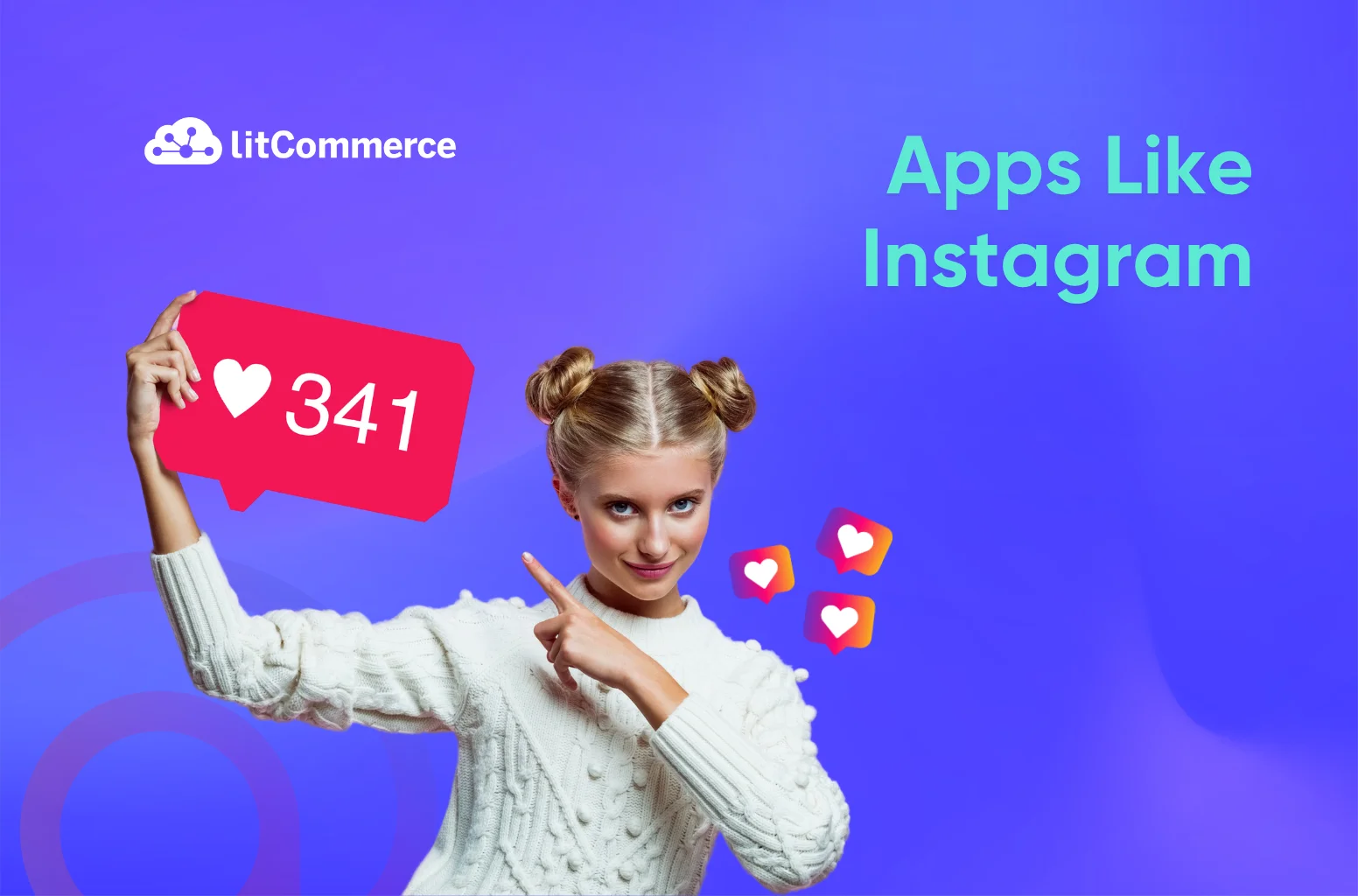Instagram in 2025 feels more crowded than ever, with polished posts and tricky algorithms making it harder to stand out. That’s why many creators and brands are exploring apps like Instagram—platforms that offer new ways to connect, grow, and share more authentically. In this post, we’ll cover 22 apps like Instagram, how to choose the right one, and tips to transition smoothly.
Expand Your Reach Beyond Instagram!
Already selling on Instagram? With LitCommerce, you can showcase your products on other top apps like TikTok, X (Twitter), Pinterest, and more. Expand your reach and boost your sales effortlessly.
1. TikTok

TikTok is one of the most popular Instagram alternatives in 2025, with over 1.59 billion users worldwide, especially Gen Z and Millennials. Unlike Instagram Reels, which mainly shows content to existing followers, TikTok’s smart algorithm helps new creators go viral by pushing videos to fresh audiences.
In 2025, the platform highlights authentic storytelling, inclusivity, and AI tools like TikTok Symphony to make content creation easier.
Pros
- Huge user base, very popular with Gen Z
- Smart algorithm makes it easy to go viral
- Fun tools for editing and trends
- In-app shopping with TikTok Shop
Cons
- Very competitive, hard to stand out
- Audience skews young, less appeal to older users
- Views depend on the algorithm, not stable
- Content disappears fast, not good for keeping memories
Best For: Sellers who want to reach Gen Z and Millennials. Great for brands in fashion, beauty, home, and lifestyle that focus on creative videos, viral products, and live shopping.
2. Snapchat

Snapchat is one of the best Instagram alternatives in 2025, especially for Gen Z and Millennials. The platform has over 850 million monthly active users and is built around real-time, short-lived content. Its main features include Stories, Spotlight, and Discover, which let users and brands share short videos, AR ads, and interactive content.
In February 2025, Snapchat also introduced a new monetization program that allows creators to earn money from stories and longer Spotlight videos, making it a strong choice for both sellers and content creators.
Pros
- Strong Gen Z and Millennial audience (75% of users)
- Real-time, short-lived content feels authentic
- Features like Stories, Spotlight, and Discover for sharing and discovery
- AR filters and lenses create high engagement
Cons
- Limited appeal to older users
- Content disappears quickly, not ideal for lasting visibility
- Smaller creator economy compared to TikTok or Instagram
Best For: Creators and brands targeting Gen Z and Millennials who value real-time, short-lived content and want to engage audiences with AR features, Stories, and Spotlight.
3. Pinterest

Pinterest is a visual discovery platform that works differently from Instagram. Instead of focusing on real-time posts, it acts as a search engine for images, ideas, and shopping inspiration. In 2025, more than 500 million people use Pinterest every month. Most are women, Millennials, and Gen Z who browse the platform for DIY ideas, fashion and home inspiration, and products to buy.
Sellers can easily create free Pinterest business accounts and utilize features such as shoppable Pins, visual search, and more to drive traffic and sales, including shoppable Pins, visual search, SEO, AR try-on, and more.
Pros
- Strong female and Millennial user base
- Content is evergreen and searchable, not short-lived
- Great for niches like fashion, beauty, home, food, and lifestyle
- Built-in shopping tools like Product Pins and Pinterest Shopping
Cons
- Smaller active community compared to TikTok and Instagram
- Less effective for real-time engagement
- Audience is limited in some regions, stronger in the US and Europe
Best For: Sellers and creators in lifestyle, fashion, home, and food who want long-lasting, searchable content that drives steady traffic and shopping inspiration.
4. X

The next app like Instagram is X (formerly Twitter). It remains an important platform for sellers and creators who want to increase brand visibility and connect through real-time conversations. In 2025, X has about 586 million monthly active users, with more than half between the ages of 18 and 34.
With X for Business, you can use features like catalog ads, promoted posts, and trending topics to drive traffic and sales. With its fast pace and global reach, X works best for brands that rely on immediacy, news, and active community engagement. The audience here responds well to timely, conversational content that feels current and relevant.
Pros
- Strong for real-time conversations and news updates
- Large, active community with global reach
- Good for building brand voice and engaging in discussions
- Advertising tools for promoted posts and trends
Cons
- Content cycle moves fast, tweets get buried quickly
- User base less visual, not ideal for image-heavy brands
- Monetization options are limited compared to TikTok or Instagram
- Audience engagement can be unpredictable
Best for individuals or brands seeking to share quick updates or engage directly with followers.
5. Facebook
Facebook remains the world’s largest social network, with over 3 billion monthly active users spanning all adult age groups. As part of the Meta ecosystem, Facebook offers a comprehensive suite of features: content sharing, messaging, groups, events, marketplace, Shops, and advanced AI-driven advertising tools.
This sites similar to instagram supports a mix of content formats, including video, stories, and live streams, making it versatile for product launches, brand storytelling, and community building.
Pros
- Large user base with over 3 billion monthly users
- Support diverse content formats, including text, photos, videos, events, groups, and more.
- Strong community building using groups or pages
- Powerful business tools such as advanced analytics, marketplace, and Shops
Cons
- Limited organic reach due to algorithm changes.
- Less visually polished and mobile-optimized than Instagram.
Best for targeted advertising and building brand communities via pages or groups, planning and promoting local or virtual events, and reaching a multigenerational or broad audience.
Maximize Your Store Visibility and Engagement Today!
Don’t just explore apps like Instagram. Boost your store reach and engagement with LitCommerce’s Facebook feed management. We make it easy with smart rules, advanced categorization, and flexible syncing
6. Reddit
Reddit is a vast and engaged community, boasting approximately 606 million monthly active users as of 2025. The platform is organized into thousands of topic-specific subreddits, allowing sellers to participate in or sponsor discussions directly related to their products or industry.
Furthermore, features such as text, image, and video posts, live audio rooms, and an expanding short-form video feed on Reddit enable brands to share product launches, answer questions, and gather feedback in real time.
Thanks to Reddit’s upvote system and community moderation, valuable and authentic content is more likely to be seen, making it ideal for building credibility, trust with niche audiences and sellers searching for apps like Instagram.
Pros
- Text-based discussions allow for in-depth conversations, debates, and more.
- Niche communities
- Support diverse content with text, images, videos, and links.
Cons
- Smaller mainstream reach because Reddit’s audience is fragmented and less focused on visual storytelling.
- No focus on visual branding or influencer marketing
Best for sellers, brands, and creators who want to engage with highly targeted, niche communities and build credibility through authentic participation and discussion
7. Tumblr
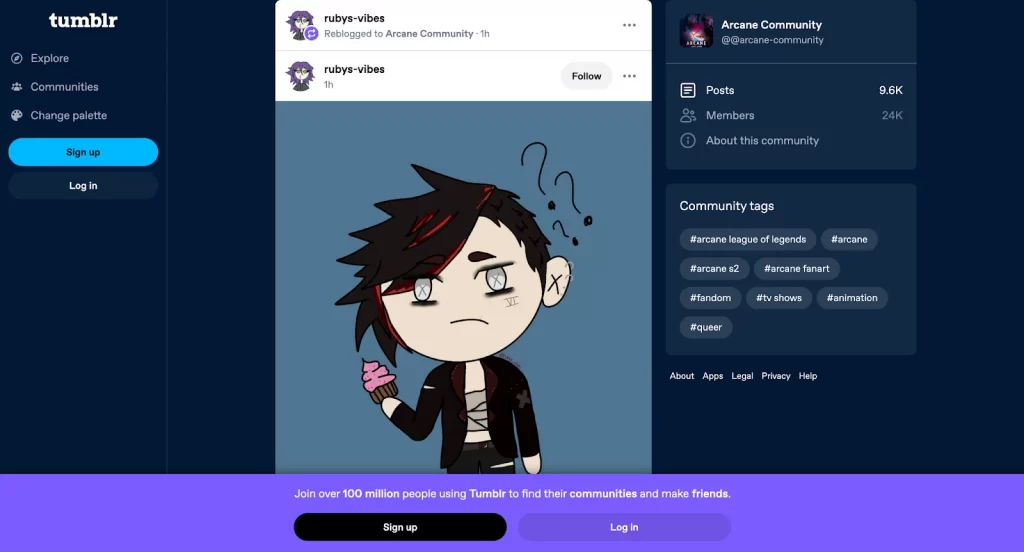
Tumblr is a microblogging and social networking platform founded in 2007 by David Karp and now owned by Automattic. It has approximately 135 million monthly active users worldwide. This figure ranks Tumblr among the top 10 most frequently visited social media platforms in the United States.
As one of the standout apps like Instagram, Tumblr allows users to create highly customizable blogs where they can post a wide range of content, including text, photos, quotes, links, audio, and video.
Pros
- High engagement rates
- Niche-specific and targeted communities
- Versatile support with microblogging and long-form content
Cons
- Limited advertising and paid promotion formats
- Insufficient analytics
Best for sharing multimedia content, among artists, fandoms, and those seeking a more customizable feed.
8. Vero

Vero is an ad-free, algorithm-free social network designed to foster authentic relationships between brands and consumers. Although its user base is smaller compared to other platforms, Vero appeals to sellers seeking a less commercialized and more curated environment.
You can share photos, videos, music, and links in a chronological feed, which ensures that content reaches followers without algorithmic interference.
Moreover, Vero’s emphasis on genuine engagement and privacy makes it a good fit for brands that prioritize quality interactions over mass reach.
Pros
- A wide variety of content
- No ads and no algorithms, content appears chronologically, not based on engagement or paid promotion.
Cons
- Limited eCommerce and influencer marketing features.
Best for photographers, artists, and creators who want to showcase high-quality visual content in a chronological, ad-free feed.
9. Mastodon
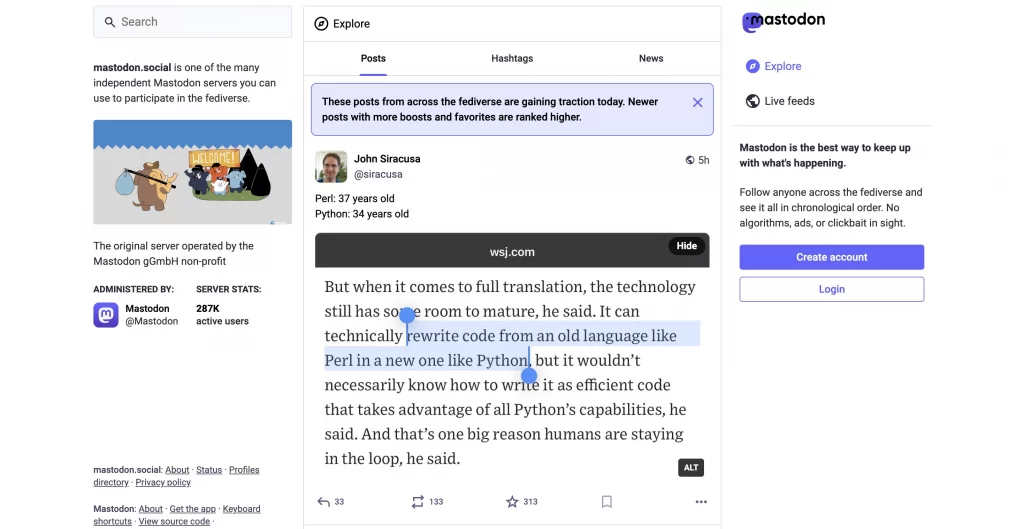
If you’re exploring apps like Instagram that prioritize privacy, transparency, and user control, Mastodon is a standout option. It is a decentralized, open-source social media platform that gives users full control over their online presence.
You can post text, images, videos, and polls, engaging audiences without ads or algorithmic feeds, which ensures that posts appear in the order they are published, without any algorithms or ads influencing what you see.
The platform supports a range of content formats, including text (with a higher character limit than X/Twitter), images, videos, polls, content warnings, and custom emojis.
Pros
- Decentralized and open-source, giving users control over data, privacy, and moderation.
- Chronological feed with no ads or algorithmic interference
Cons
- Smaller and less active user base.
- Limited eCommerce and influencer marketing features.
Best for those who value ethical marketing and grassroots engagement.
10. Triller
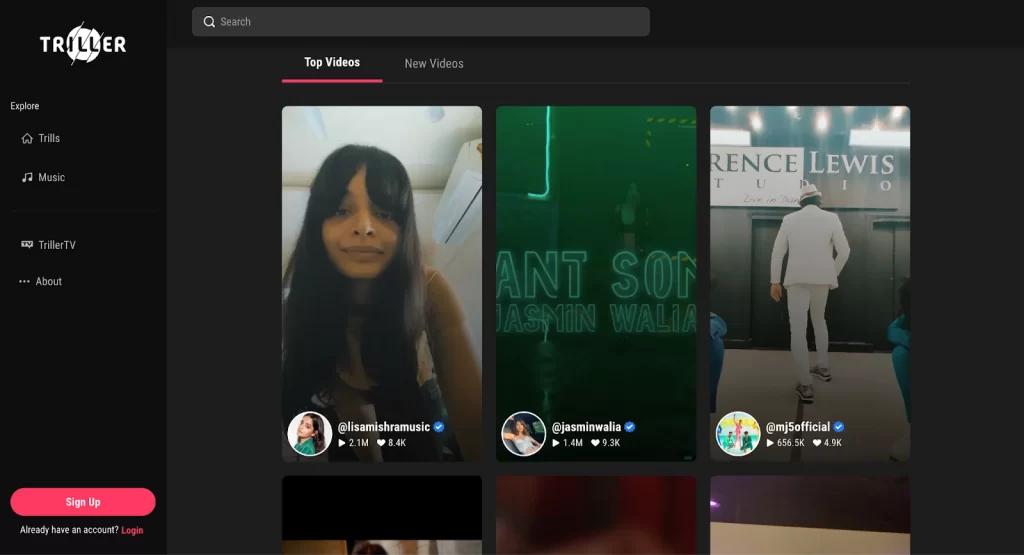
Triller is a social video platform that focuses on music-driven, short-form content. It enables users to create professional-looking music videos with automatic editing tools and a large library of tracks.
What sets Triller apart is its emphasis on music industry partnerships, artist collaborations, and live events.
Pros
- Music-first, short-form video platform with AI-powered editing
- Strong music industry ties.
Cons
- Niche audience; less versatile and smaller than Instagram’s global user base.
- Limited content diversity, primarily featuring music and dance.
- Fewer business tools, analytics, and e-commerce features
Best for musicians, dancers, and creators focused on music-driven content and viral video challenges.
11. Clubhouse
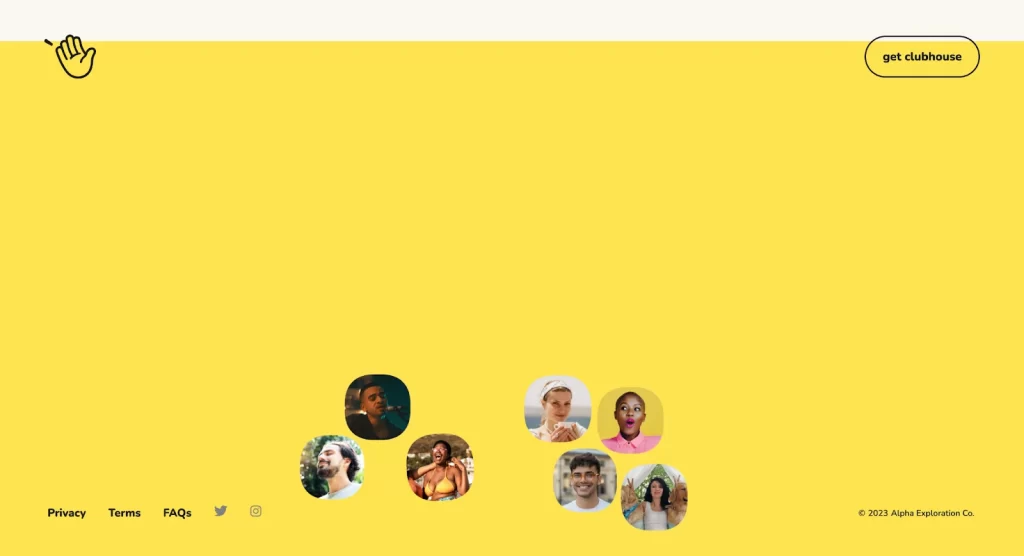
Clubhouse is a social audio app that enables users to join or create real-time, voice-only chat rooms on a wide range of topics. Unlike traditional social networks that focus on text, images, or video, Clubhouse centers around spontaneous, drop-in audio conversations where participants can listen, speak, or moderate discussions.
Key features of this apps like Instagram include virtual rooms with varying levels of privacy, scheduled events, clubs for recurring interests, and a backchannel for private messaging.
Pros:
- Audio-only, real-time conversations foster authentic networking and knowledge sharing.
- No pressure of visuals; ideal for those who prefer voice over camera.
- Good for social listening, trend spotting, and community building.
Cons:
- Limited content discovery and search
- Smaller, niche audience compared to Instagram
Best for brands focused on networking, live discussions, and building authority through voice rather than visuals.
12. RedNote (Xiaohongshu)

RedNote (Xiaohongshu) is a Chinese social commerce platform that blends user-generated lifestyle content with eCommerce. It is one of the most popular apps like Instagram in China, offering a unique blend of lifestyle content and social commerce.
This app allows primarily young, urban consumers to share product reviews, shopping tips, travel experiences, and daily life moments through photos, videos, and detailed posts.
The platform’s powerful search and recommendation features help users discover trends and products, while integrated shopping options enable seamless purchases directly from posts. Xiaohongshu stands out for its influence on consumer decisions and its vibrant community of creators, making it a leading destination for lifestyle inspiration and social shopping in China.
Pros
- Highly engaged, niche community focused on detailed reviews and authentic recommendations.
- Strong intent to purchase; users spend more time per post and value in-depth information.
- Native advertising that feels organic.
Cons
Primarily serves young urban women in China, with a limited global reach.
Best for brands in beauty, fashion, lifestyle, and travel targeting Chinese consumers who value detailed, authentic product information and community-driven recommendations.
13. WeChat
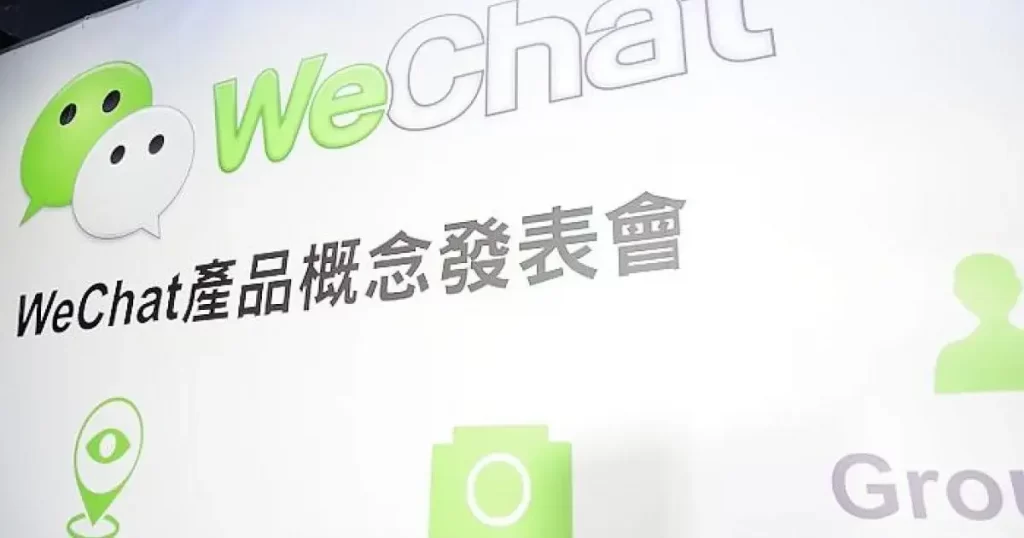
WeChat, also known as ‘the Everything app’ and ‘Weixin’ in China, is another Chinese social media app, owned by Tencent. With over 1.336 billion monthly active users, it’s the sixth-largest social media platform in the world and the most popular social media app in China by a large margin.
Unlike Instagram, WeChat primarily caters to a domestic audience, rather than an international one. The vast majority of the app’s users are Chinese, with the majority of international users coming from other parts of Asia.
WeChat users can leave voice messages, make phone or video calls, play games, shop for products, pay bills, book taxis, and much more.
Pros
- All-in-one platform: messaging, social feed (Moments), payments, shopping, and mini-programs.
- Essential for reaching Chinese consumers; not blocked in China
- Automatic translation and localization features for Chinese
Cons
- Limited adoption outside China
- Privacy and censorship concerns due to government regulations and data practices.
- Complex interface and sign-up process
Best for brands and sellers targeting Chinese audiences or operating in China
14. Threads
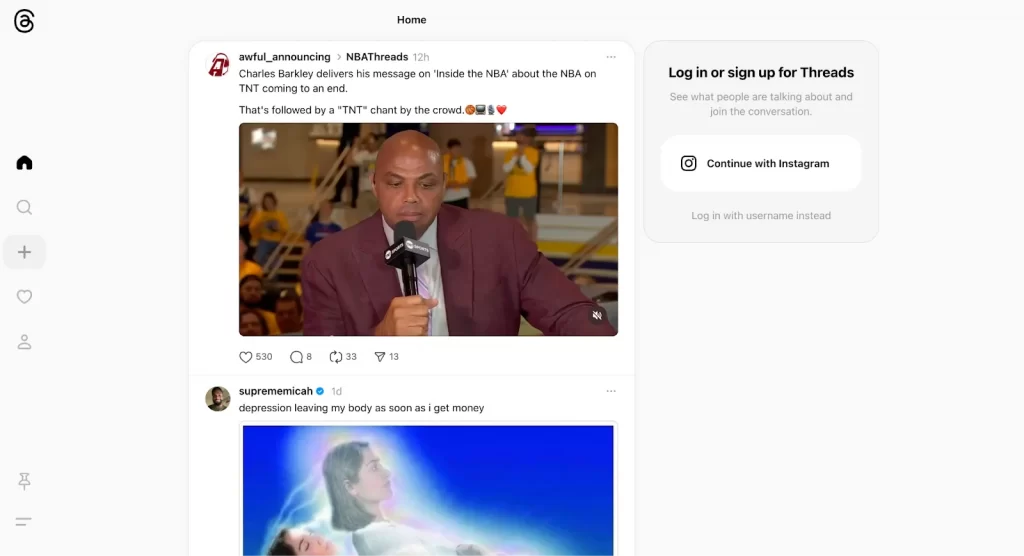
Threads is a text-based social media platform developed by Meta and seamlessly integrated with Instagram. Threads has surpassed 350 million monthly active users in 2025.
As one of the fastest-growing apps like Instagram, Threads stands out by enabling users, particularly creators and brands, to engage in real-time conversations, organize posts into threaded discussions, and manage privacy settings for each thread.
Furthermore, its integration with Instagram means users can easily connect with their existing followers, making it a convenient platform for sharing updates, starting discussions, and building communities around trending topics.
Pros
- Seamless integration with Instagram, allowing instant access to your existing audience and easy cross-posting.
- Community-driven, ad-free environment
Cons
- Limited availability in some countries restricts global reach.
- Less robust analytics and scheduling tools than Instagram’s
Best for sellers and creators who want to build text-first communities, foster discussions, and leverage their Instagram following for engagement.
15. Bluesky
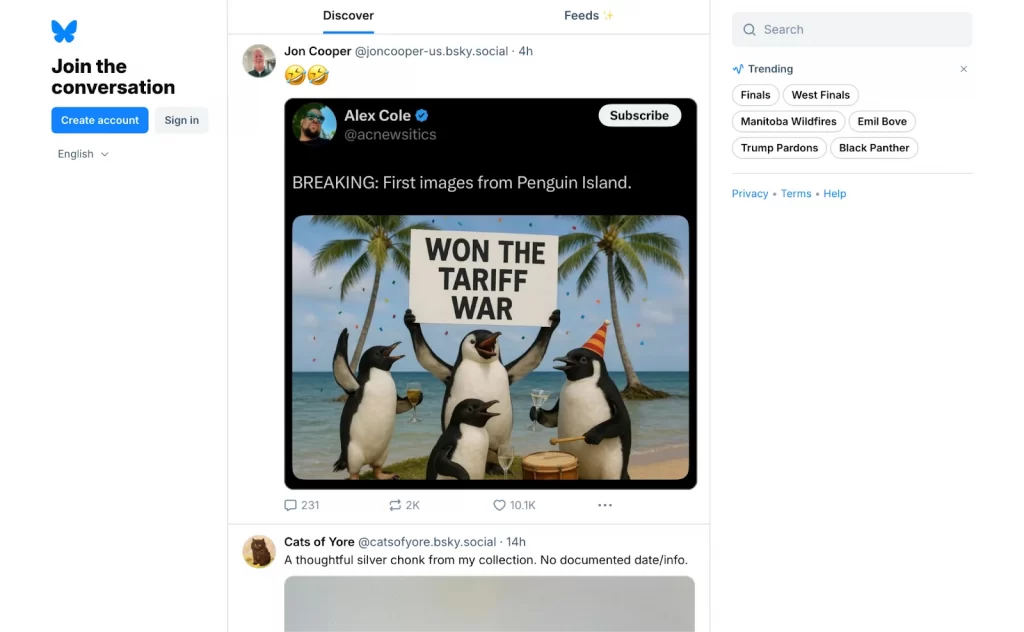
Bluesky is a decentralized social media network that emerged from a project initiated by Twitter co-founder Jack Dorsey. With approximately 30 million users in 2025, Bluesky provides users with full control over their content and audience.
Unlike traditional platforms, Bluesky enables users to move their profiles and followers between servers, fostering an open, customizable, and privacy-focused social web. Additionally, it prioritized slow, community-led growth, focusing on trust, transparency, and creative freedom rather than chasing mass adoption.
Pros
- Decentralized, privacy-focused platform giving users control over data and algorithms.
- Customizable experience with the ability to move profiles and followers between servers.
- Niche, highly engaged early-adopter audience.
Cons
- Smaller, more exclusive user base compared to Instagram,
- Still in early development, so features and functionality are less comprehensive
Best for creators, brands, and communities who value personalization, chronological feeds, and greater control over their social networking experience.
16. Retrica
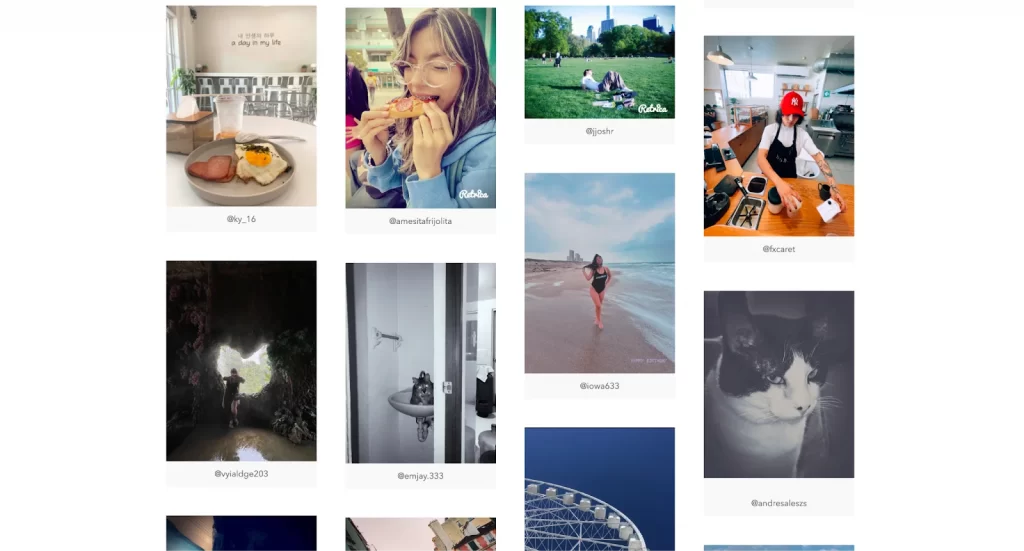
Retrica is a popular mobile camera and photo-editing app known for its real-time filters and vintage-inspired effects. It allows users to capture expressive photos and videos, create collages, and apply real-time or post-capture edits.
The app offers a wide array of creative tools, including stickers, collages, GIF creation, and integration with social networks like Instagram and Facebook. Instagram, on the other hand, is a full-fledged social media platform that combines photo and video sharing, messaging, Stories, and more!
Pros
- Advanced image editing and many playful filters, GIFs, collages, multi-shot grids, GIF creation, stickers, vignettes, and stamps
- High-quality vintage effects
- Direct sharing
Cons
- No built-in social network, such as social feed or discovery features
- Limited content types
- No community features such as commenting, direct messaging, or group
Best for users seeking a creative, filter-rich camera app without the pressures or distractions of social networking.
17. Locket

Locket is a unique social app designed for sharing real-time photos directly to friends’ home screens via a widget. Originally created as a personal project, Locket quickly gained popularity for its intimate approach, limiting sharing to a small circle of close friends or family.
You can send spontaneous photos that appear instantly on each other’s devices, making the experience personal and private, in contrast to the broader reach of platforms like Instagram. The app limits you to 20 friends, ensuring your sharing circle remains small and personal.
Important notes: Locket is not ideal for broad audience marketing or brand promotion due to its limited reach and focus on close personal connections. So, consider carefully before choosing this platform as an Instagram alternative.
Pros
- Real-time, intimate sharing of photos directly to friends’ home screens.
- No public feed or algorithmic pressure.
Cons
- No filters, editing tools, and algorithmic feeds.
- Limited friends.
- No monetization or ads.
Best for creators and small sellers focused on personal branding, close-knit communities, or exclusive content for VIP customers.
18. BeReal

BeReal is a social app launched in December 2019. As of 2025, BeReal has approximately 16–33 million monthly active users, with its core audience comprising Gen Z and young adults, particularly in the United States and Europe.
The app’s main feature is a daily notification at a random time, giving users two minutes to capture and share a photo using both the front and back cameras simultaneously, showing both their face and what they’re doing.
Pros
- Promotes authenticity with unfiltered, real-time photos
- Reduces pressure for perfection and curated content.
Cons
Limited commercial functionality
Best for individuals and micro-communities seeking genuine, pressure-free sharing, not suitable for most brands or sellers.
19. Lemon8
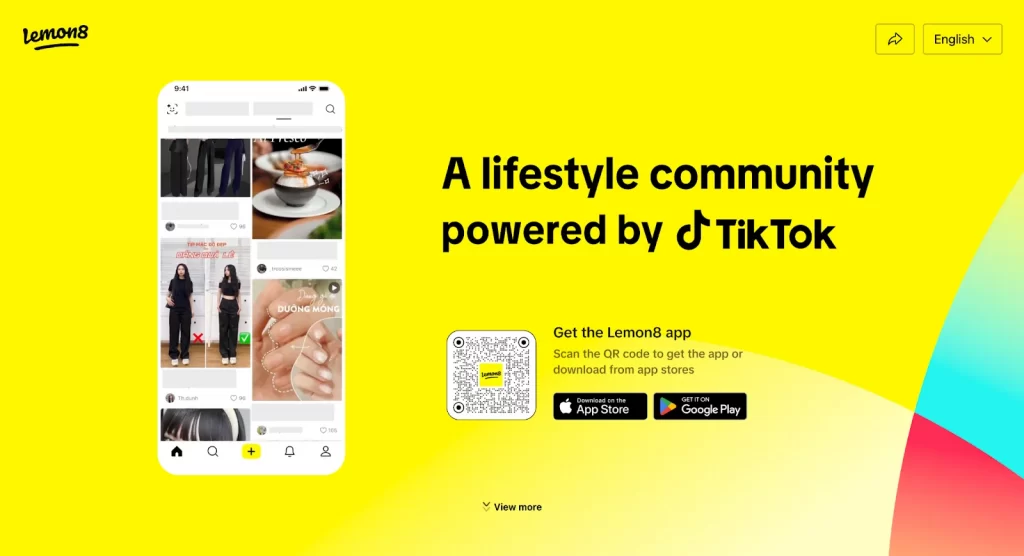
Lemon8 is a lifestyle-focused video and photo-sharing app developed by ByteDance, the creators of TikTok. Launched in 2020 and now integrated with TikTok accounts, Lemon8 blends elements of Instagram, Pinterest, and Canva, centering on wellness, travel, food, and beauty content.
Its aesthetic-driven platform enables creators to share visually engaging posts and reach a wider audience through cross-platform sharing.
Pros:
- Combining Instagram’s and Pinterest’s visual style with TikTok’s short-form video
- Allows for long captions and in-depth storytelling
- Built-in graphic design tools and community engagement features.
Cons:
- Smaller user base
- Less brand recognition than Instagram.
Best for sellers and creators in lifestyle, wellness, beauty, and travel niches who want to create visually polished, story-rich content.
20. QQ

QQ is a comprehensive instant messaging and social networking platform developed by Tencent. It offers a vast array of services, including instant messaging, social networking, online gaming, music and entertainment content, visual gifts, and more.
It remains especially popular among younger users, with 562 million active users aged 16 to 26, who seek a more entertainment-focused experience. It’s accessible on Windows, Mac, Linux, Android, and iOS, with both Chinese and international versions available (supporting multiple languages
Pros:
- Feature-rich ecosystem (including messaging, gaming, music, blogging, and social networking).
- International language support.
- Popular among young people.
Cons:
- Primarily China-focused.
- Cluttered interface.
- Language barriers exist because some features are still in Chinese.
Best for sellers targeting Chinese Youth and Gen Z, focus on the Chinese market.
21. Imgur
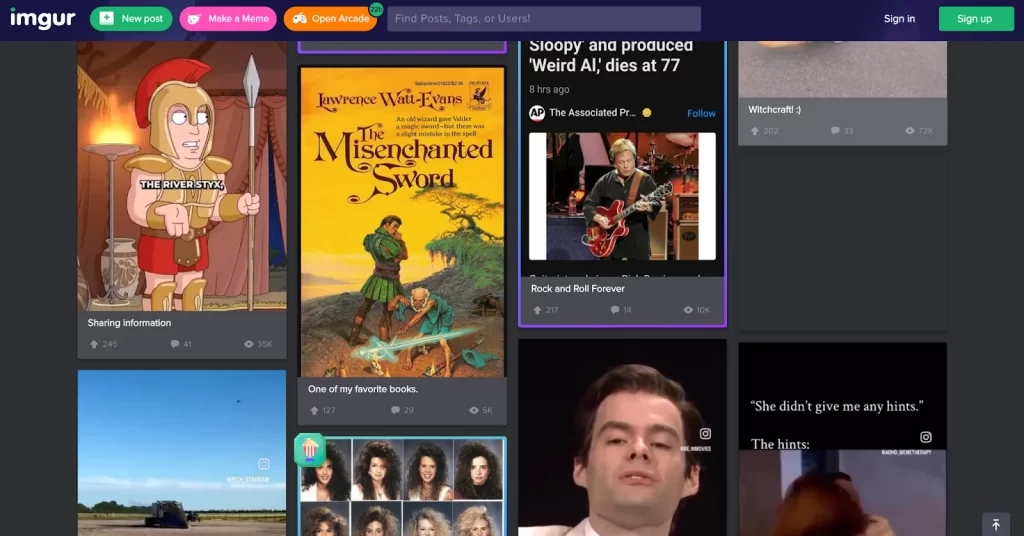
Imgur is a popular image-sharing and hosting platform known for its viral, community-driven content. With millions of active users, Imgur allows you to upload, share, and comment on photos, GIFs, and short videos.
As one of the more entertaining apps like Instagram, Imgur thrives on humor, creativity, and internet culture. Its upvote/downvote system helps surface the most engaging content to the front page, while its vibrant community fuels a constant stream of memes, pop culture moments, and visual storytelling.
Pros
- Vast collection of funny, informative, and inspiring images, memes, and GIFs
- Community-driven with upvote/downvote system
Cons
Too dominated by memes, which may not appeal to everyone.
Best for content creators who want to share a variety of content types, including images, GIFs, memes, videos, and reviews.
22. Likee
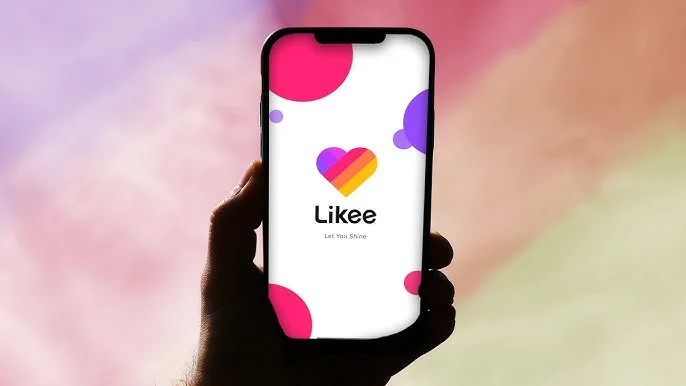
The final platform in the apps like Instagram list is Likee. This tool is a global platform for creating and sharing short videos, similar to TikTok. Unlike TikTok, which focuses heavily on global trends and viral reach, Likee puts more emphasis on AR-powered effects, visual creativity, and live streaming feature.
It offers a wide range of video editing tools, special effects, and filters, enabling users to produce creative and engaging short-form videos. Additionally, Likee’s discovery features and trending challenges help you reach new audiences and build communities around viral content.
Pros:
- Robust short video creation tools and video effects
- Trending challenges and community features help creators go viral and rapidly grow their audience.
- Supports global reach
Cons:
- Fewer monetization opportunities (only virtual gifting and live stream income)
- Limited content type, supports only video format.
- Unavailable in India
Best for creators and sellers targeting younger, trend-driven audiences with engaging short-form video content and viral challenges.
Steps to Choosing the Right Alternatives to Instagram
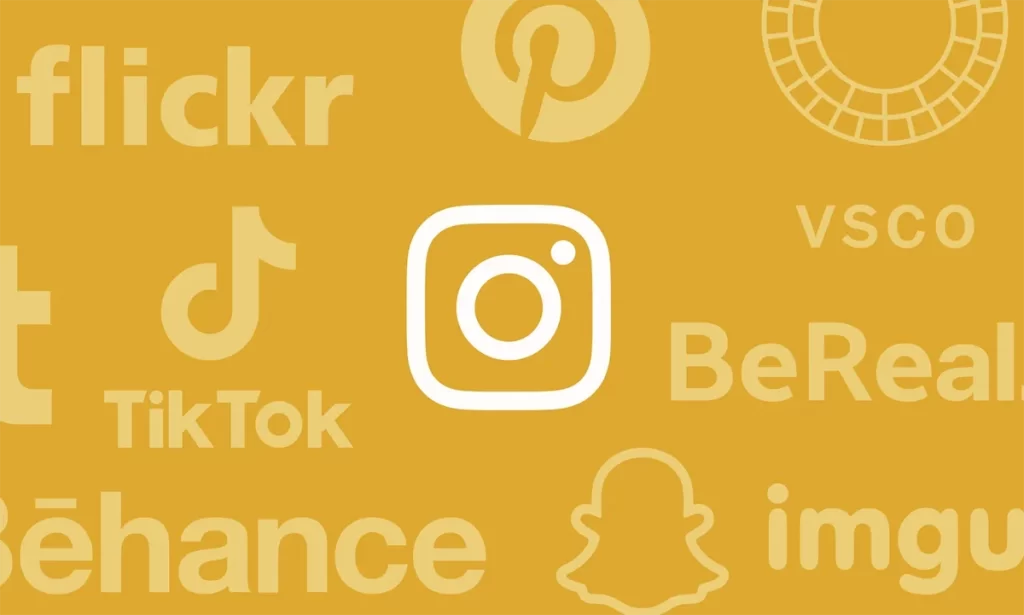
Selecting apps like Instagram depends on several factors, including your goals, content types, audience, and more. Here are the steps to choose the right Instagram alternatives.
Step 1: Define your goals and priorities
Knowing your purpose helps you focus on platforms that best support your needs, whether it’s personal sharing, business, or community-building. Determine why you want an alternative to Instagram. Are you seeking:
- Visual content sharing (photos, videos)?
- In-depth discussions or niche communities?
- Real-time updates or news?
Step 2: Prioritize key features
After understanding your goals, let’s outline the essential features, including privacy controls, eCommerce tools, and various content formats. Then, compare platforms based on these.
Different platforms offer different tools and experiences. Therefore, selecting the right features ensures that the platform aligns with your content style and privacy expectations.
- If you dislike algorithm-driven feeds, choose platforms like Vero or Pixelfed, which show posts in the order they’re shared.
- Decide whether you want to share photos, videos, stories, or a combination of mixed media. For instance, some platforms (like Pinksky or Pixelfed) focus on visuals, while others (like Tumblr or Bluesky) support broader content.
Step 3: Evaluate your audience
Start by clearly defining the audience you want to reach, consider factors such as age, interests, profession, and geographic location. Understanding who you’re trying to engage will help guide your platform choice.
Next, research where this audience is most active. You can explore platform demographics through web searches or sources like Pew Research and Statista. Additionally, observe where similar creators or businesses connect with their followers.
Consider how your audience prefers to engage. Do they enjoy casual browsing, like on Instagram or Pinterest? Are they drawn to active discussions, as on Reddit? Or do they prefer quick, real-time interactions, like those on X?
By aligning your platform choice with your audience’s habits and preferences among apps like Instagram, you’ll boost engagement and content effectiveness while avoiding the pitfall of investing time on a platform where your audience isn’t truly present
Step 4: Test and monitor your channels
Once you’ve chosen one or two platforms, the next step is to test and evaluate their performance. Most social platforms offer built-in analytics tools that let you monitor key metrics, such as engagement, follower growth, and content shares, providing valuable insights that help you understand what’s working.
For example, you might start by posting on both Facebook and Instagram, but discover that Facebook generates more interaction or conversions. That data allows you to make informed decisions about where to concentrate your efforts.
After thoroughly testing, focus on the platform that aligns best with your goals, audience behavior, and content style, thereby maximizing your impact while using your time efficiently.
Bring Your Product to TikTok, Instagram & Pinterest!
Expanding to Instagram, Pinterest, or TikTok? LitCommerce ensures your product feeds stay accurate with 2,000 pre-designed templates, smart rules, and quality checks.
Tips for Transitioning to Apps Similar to Instagram
Transitioning from Instagram to apps like Facebook, X, Reddit, Tumblr, and more requires a strategy to maintain your audience and adapt content. Here are concise tips for a smooth shift, tailored to platforms with visual or social elements, including those with real-time updates or a news focus.
- Choose the right platform: First, align your goals with a platform’s strengths. Additionally, selecting the wrong platform risks wasting time on an audience mismatch or incompatible features.
- Adapt your content with the platform: Tailor Instagram posts to the new platform. For example, use concise text with hashtags on X, detailed posts on Reddit, or high-quality visuals on Pinterest.
- Rebuild your audience: Announce your move on Instagram via posts or Stories, linking to your new profile. Furthermore, cross-promote content and engage with existing users to attract followers.
- Optimize your profile: Use a consistent username and Instagram’s profile picture. Write a clear bio (e.g., “News updates on X”) and add relevant links.
- Test content engagement: Post consistently for 1–2 months, tracking likes, comments, or upvotes. Adjust based on what resonates (e.g., timely X posts for news).
- Maintain Instagram presence: Pin a post or use Stories to direct followers to your new platform, easing the transition.
Best Instagram Alternative: FAQs
What is the best alternative to Instagram?
The best apps like Instagram are:
1. TikTok
2. Snapchat
3. Pinterest
4. X
5. Facebook
6. Reddit
7. Tumblr
8. Vero
9. Mastodon
10. Triller
11. Clubhouse
12. RedNote (Xiaohongshu)
13. WeChat
14. Threads
15. Bluesky
16. Retrica
17. Locket
18. BeReal
19. Lemon8
20. QQ
21. Imgur
22. Likee
Are there any social media apps like Instagram?
Yes, several apps offer features similar to Instagram, with a focus on visual content sharing and social interaction. Some popular alternatives include TikTok, Snapchat, Vero, BeReal, VSCO, Pinterest, and Likee
What is the hottest social media right now?
It’s challenging to pinpoint a single “hottest” social media platform, as popularity and trends vary significantly. However, TikTok, Facebook, YouTube, Instagram, and WhatsApp are consistently among the most popular and widely used social media platforms.
At what age do people stop using Instagram?
According to Statista, the age group that used Instagram the least was those older than 65 years, comprising 5.8 percent of users.
Discover These Best Apps like Instagram Today!
While Instagram remains a dominant force in social media, it’s not the only option, especially if you’re looking for a platform that better aligns with your unique goals, content style, or audience preferences. Whether you’re seeking more authentic interactions, niche communities, or tools tailored to your creative or business needs, exploring alternatives can open up new opportunities.
In this blog post, we’ve covered 22 of the best apps like Instagram, along with practical steps to help you choose the right platform for your needs. You’ll also find tips on how to successfully transition to a new social media space, from adapting your content to rebuilding your audience.
Now is the perfect time to explore new platforms that align more closely with your goals and creative vision. And if you’re selling online, LitCommerce can help you go beyond social apps and bring your products to multiple platforms, such as TikTok, Pinterest, Etsy, and more. For more insights on eCommerce platforms and social media strategies, you can also check out our Blog, or contact us for personalized, one-on-one support.

